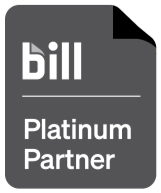
Every business owner wants to be profitable. But how do you truly know your level of profitability? Between incoming revenue and outgoing expenses, it is easy to get lost in the numbers.
While no single metric should be used to determine business profitability, accountants use profit margins to get a better look. Let’s discuss operating margins, how to calculate profit for small businesses, and review what contributes to net profit margin for service-based businesses.
What is an operating margin?
Before you even get into profit margins, think about your operating margin. Operating margin measures your company’s revenues after accounting for both operating and nonoperating expenses. It represents your operating income—also known as return on sales—divided by your revenue. Operating income represents your net sales after you pay operating expenses.
Your operating margin is important because it has the potential to create shareholder value and provide continuous loan servicing for lenders. When your operation generates profits instead of losses, you’re more appealing (and less of a risk) to these parties. The higher your operating margin, the less your perceived financial risk.
What are some key terms to understand?
Figuring out how to calculate profit for small businesses isn’t a one-way street. It has plenty of nuances. Let’s brush up on the important terms and formulas that contribute to your profit and overall operating margin.
Revenue
Revenue—aka top-line revenue, gross billings, or gross sales revenue—is the gross income your business receives from products and/or services sales before deducting expenses. Revenue is usually reported monthly, quarterly, or annually.
Cost of Goods Sold (COGS)
These are the total costs that are directly attributed to your company’s product(s) and/or service(s). COGS may include such aspects as manufacturing costs or the cost of time spent assisting a client.
Gross Profit
Gross profit is your company’s revenue minus the COGS. In other words, it’s your profit after accounting for product and/or service cost for what was sold. This figure is important for determining the profitability of a particular product or service.
Gross Profit Margin
To calculate gross profit margin—aka gross margin—divide gross profit by revenue. This will provide the ratio of gross profit compared to your total revenue.
Eddie’s quick video explains this calculation.
But this isn’t the only number to focus on when trying to make sure your business is profitable. You also need to factor in net profit and net profit margin.
Net Profit
Net profit is how much your business keeps after accounting for all business expenses. Expanding the scope beyond the cost of the goods sold, net profit is equal to your company’s total revenue minus the total business expenses.
Net Profit Margin
The net profit margin formula is similar to gross profit margin, calculated by dividing net profit by revenue.![[Free Resource] Try our Cash Forecasting Tool to manage the financial position of your company >>](https://no-cache.hubspot.com/cta/default/396263/755edab3-e042-4cec-9c9f-882393f8db1f.png)
How are service-based industry margins unique?
Net profit margin only measures how much money is earned per dollar of sales. However, this doesn’t reflect how much money your business could make. Several factors decide what adds to—or takes away from—a service-based business’s net profit margin.

The factors contributing to net profit margin for service-based businesses can be difficult to pin down. Whether the service is repairing computers or packing and moving for homeowners, you need to account for new variables for these types of business.
1. Direct Costs
Direct costs can be fully attributed to producing a service. For service-based industries, these costs include everything from supervisor salary to sales commission for a specific project.
For example, if ABC Company is designing a computer program for a customer for internal use, the costs would be assigned to the customer as a direct cost.
2. Indirect Costs
Indirect costs are the operational costs of doing business. Indirect costs factor in aspects such as rent and utilities overhead, administrative costs, cleaning supplies, computers, cell phones, technology, and office furniture. Several indirect costs can be associated with employees, such as health insurance, other benefits, and employee training.
3. Time Costs
As the adage goes, “Time is money.” Collecting and monitoring data to figure out how much time is necessary for a service makes projecting costs easier. Time tracking programs enable you to monitor the productivity of employees and determine how long you need to deliver certain services.
4. Employee Salaries
A marketing director who has been with your firm for the last seven years will not be on the same end of the salary spectrum as a young graphic designer. To account for the indirect costs of their salaries, it helps to calculate an average hourly rate. Your business accountant can assist you with this calculation.
5. Marketing
While marketing is vital to your business’s success, it does eat into your net profit margin. Whether your social media manager handles your marketing strategies or you’re running SEO campaigns, these activities require different levels of advertising costs, impacting your net profit margin.
Monitor profit margins and essential metrics for business success.
Several elements make it easy to not only determine how to calculate profit for small businesses but also increase it. By staying attentive to profit metrics as your company grows and matures, your business will continue to stay profitable.
Need a clearer view of your business’s financial picture to help plan for the future? Download our free cash flow forecast tool, and reach out to learn how Ignite Spot can help you!













.png)




